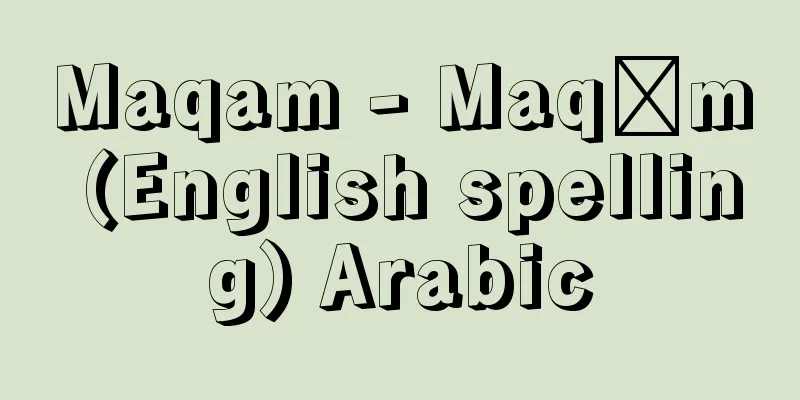Maqam - Maqām (English spelling) Arabic

|
A mode used in classical music in Arab countries and Turkey. The original meaning is "place" and the plural is maqāmāt. Attempts to theorize about maqams have been made as early as the 8th century using the fingerboard of the plucked string instrument oud. Today, each maqam with an individual name is characterized by various elements such as the scale consisting of microtones and neutral intervals narrower than a semitone, the way in which the tetrachords (fourth interval frames) and pentachords (fifth interval frames) that make up the scale are connected, the range, the melody type, and the tonic note, and in particular the interval structure and the tonic note are often used as the criteria for classification. It is said that there are more than 100 maqams in total, but only about 20 to 30 of them are commonly used in each region. Furthermore, even maqams with the same name usually have different characteristics and usage depending on the region. Arabic and Turkish classical music is often written in the form of a multi-movement suite, but the maqam chosen at the beginning of the performance is not changed throughout the entire movement, creating a consistent emotional atmosphere and providing a basis for improvisation. In Iran, it is not called maqam, but is generally called dastgah and ahbaz. [Yoichi Yamada] [Reference] |Source: Shogakukan Encyclopedia Nipponica About Encyclopedia Nipponica Information | Legend |
|
アラブ諸国やトルコの古典音楽で用いられている旋法。原義は「場所」で、複数形はマカーマートmaqāmāt。マカームに関する理論化は、撥弦(はつげん)楽器ウードの指板を利用して早くも8世紀ごろから試みられてきた。今日では、個別名をもつ各マカームは、半音より狭い微分音や中立音程からなる音階と、それを構成するテトラコード(4度音程枠)やペンタコード(五度音程枠)の連結の仕方、音域、旋律型、そして主音といったさまざまの要素によって性格づけられており、とくに音程構造と主音がその分類基準とされることが多い。マカームの総数は100以上ともいわれるが、各地域でよく用いられるのはそのうち20~30種ほどである。また同じ名称のマカームでも、その性格や用いられ方は地域ごとに異なるのが普通である。アラブやトルコの古典音楽はしばしば多楽章からなる組曲形式をとるが、演奏に際して始めに選ばれたマカームは全楽章を通して変えられることはなく、一貫して特定の情緒的雰囲気を醸し出しつつ、即興演奏のための基盤を与える。 なお、イランではマカームとはよばず、一般にダストガーおよびアーバーズという。 [山田陽一] [参照項目] |出典 小学館 日本大百科全書(ニッポニカ)日本大百科全書(ニッポニカ)について 情報 | 凡例 |
<<: Mallard (English spelling)
Recommend
The Bride of Otori Castle
...This medium-length film made Nakamura Kinnosuk...
Bantu people - Bantu (English spelling)
Bantu does not refer to a single tribe, but is a g...
Izumo Province
The old name of the eastern half of Shimane Prefe...
Clavulinopsis fusiformis (English spelling) Clavulinopsis fusiformis
...They are found widely throughout Japan and the...
stilt
...The legs are relatively short and red. There a...
"Kanaya Kingoro's Later Project" - Kanaya Kingoro's Later Project
...Kaneya Kingoro died of an illness in November ...
Untashgar - Untashgar
…The ruins of an Elamite city, located 40 km sout...
Paul Klee
Swiss painter. Born December 18th in Münchenbuchs...
Kinugasa Toshizo - Kinugasa Toshizo
…His wife is the actress Chihaya Akiko (married i...
epistula commendatriciae
…However, if the sender played a public role, it ...
Saint-Just (English spelling) Louis Antoine de Saint-Just
1767‐94 He was a member of the National Assembly d...
National polity ideology - kokutaishisou
It refers to an ideology that advocates the legiti...
Ei Lan Tai (Ei Lan Tsai) - Ei Lan Tai
A lichen that grows on the ground in high mountain...
Ijora Factory - Ijora Factory
…It is located 26 km southeast of St. Petersburg ...
Italian Canna - Italian Canna
…Ornamental cultivars of canna are the result of ...









